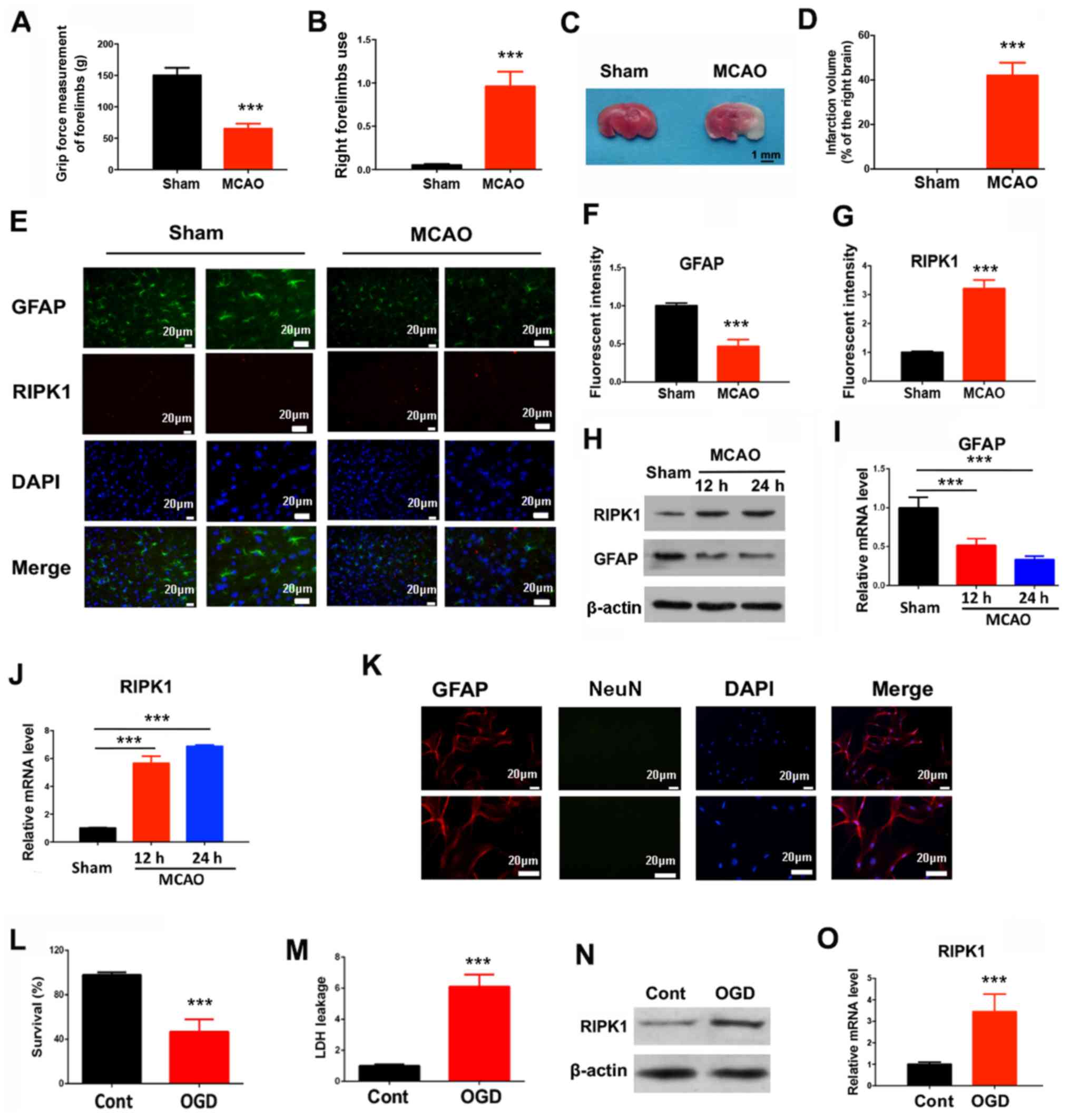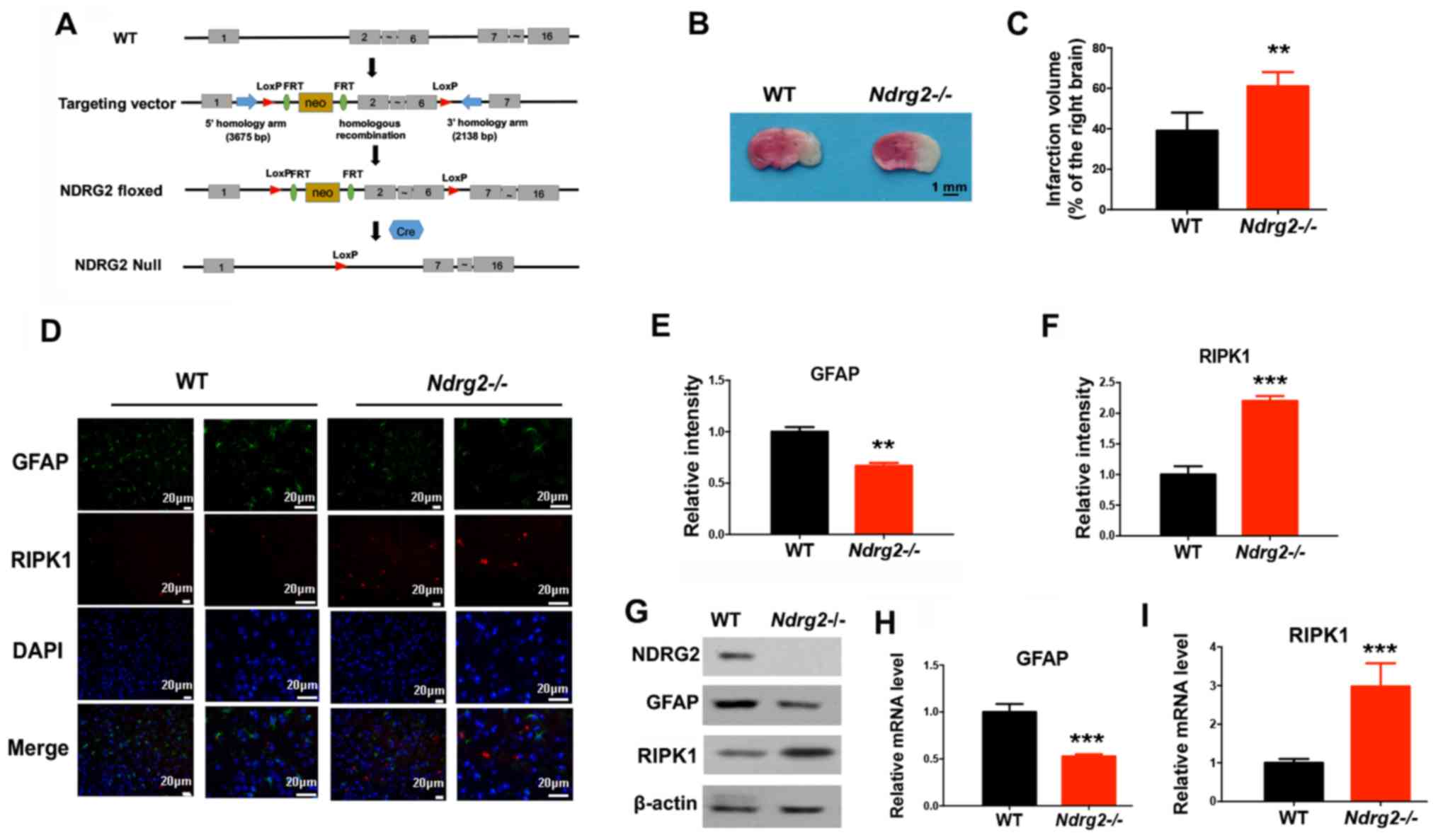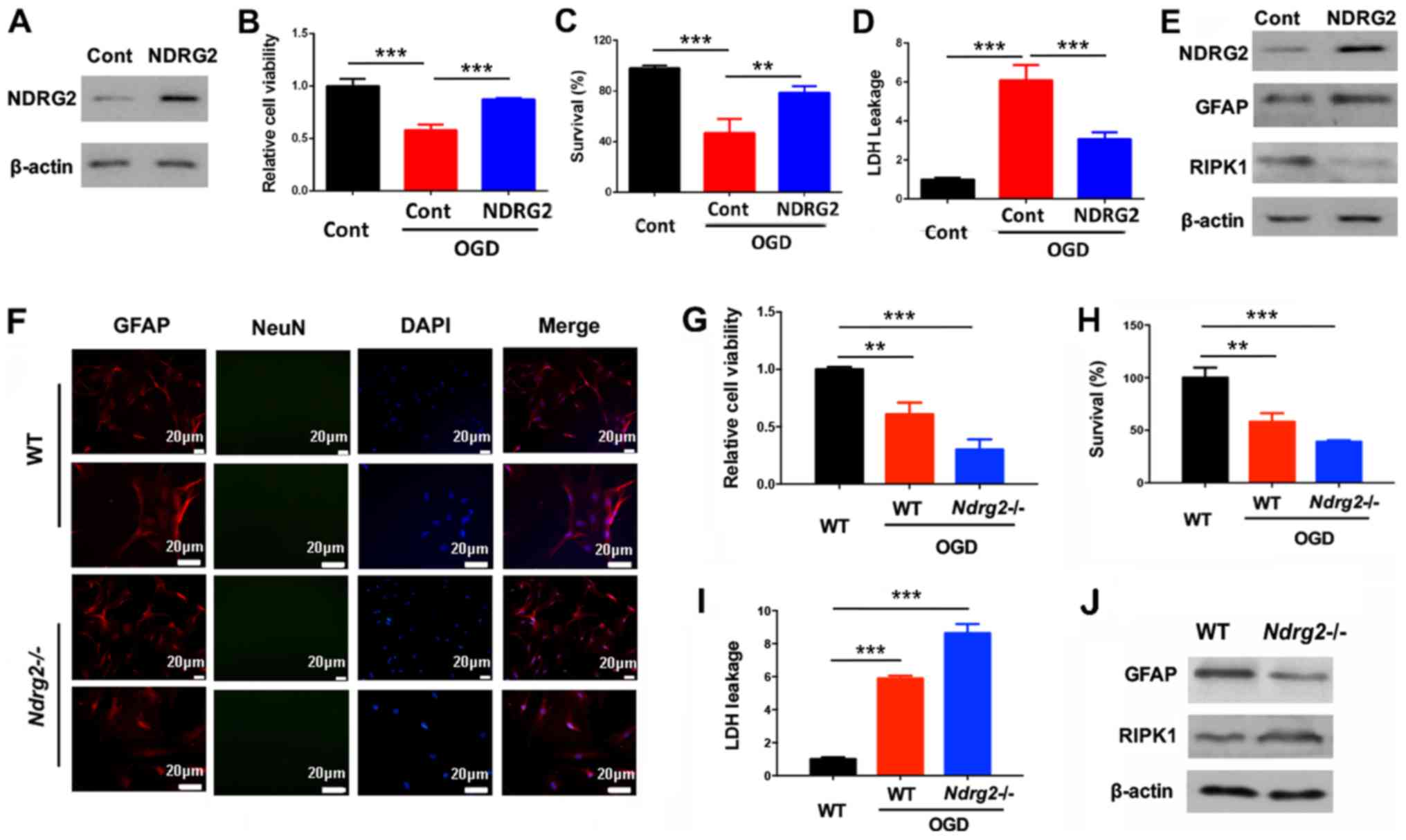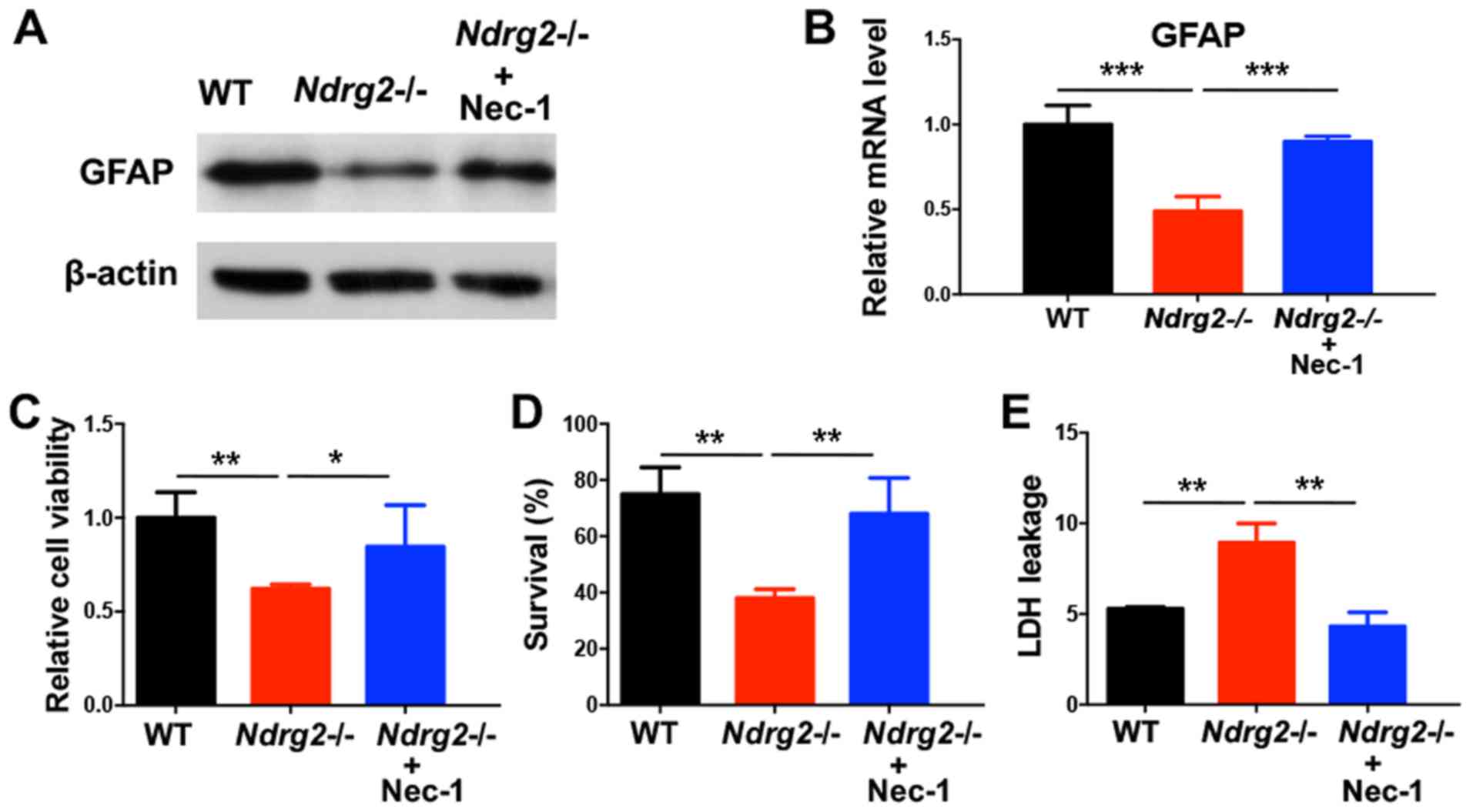|
1
|
Hyder AA, Wunderlich CA, Puvanachandra P,
Gururaj G and Kobusingye OC: The impact of traumatic brain
injuries: A global perspective. NeuroRehabilitation. 22:3103–353.
2007. View Article : Google Scholar
|
|
2
|
Bouma GJ, Muizelaar JP, Choi SC, Newlon PG
and Young HF: Cerebral circulation and metabolism after severe
traumatic brain injury: The elusive role of ischemia. J Neurosurg.
75:685–693. 1991. View Article : Google Scholar : PubMed/NCBI
|
|
3
|
Piper LC, Zogg CK, Schneider EB, Orman JA,
Rasmussen TE, Blackbourne LH and Haider AH: Guidelines for the
Treatment of Severe Traumatic Brain Injury: Are They Used? JAMA
Surg. 150:1013–1015. 2015. View Article : Google Scholar : PubMed/NCBI
|
|
4
|
Davila D, Thibault K, Fiacco TA and
Agulhon C: Recent molecular approaches to understanding astrocyte
function in vivo. Front Cell Neurosci. 7:2722013. View Article : Google Scholar : PubMed/NCBI
|
|
5
|
Ota Y, Zanetti AT and Hallock RM: The role
of astrocytes in the regulation of synaptic plasticity and memory
formation. Neural Plast. 2013:1854632013. View Article : Google Scholar : PubMed/NCBI
|
|
6
|
Bambrick L, Kristian T and Fiskum G:
Astrocyte mitochondrial mechanisms of ischemic brain injury and
neuroprotection. Neurochem Res. 29:601–608. 2004. View Article : Google Scholar : PubMed/NCBI
|
|
7
|
Trendelenburg G and Dirnagl U:
Neuroprotective role of astrocytes in cerebral ischemia: Focus on
ischemic preconditioning. Glia. 50:307–320. 2005. View Article : Google Scholar : PubMed/NCBI
|
|
8
|
Nakashima MN, Yamashita K, Kataoka Y,
Yamashita YS and Niwa M: Time course of nitric oxide synthase
activity in neuronal, glial, and endothelial cells of rat striatum
following focal cerebral ischemia. Cell Mol Neurobiol. 15:341–349.
1995. View Article : Google Scholar : PubMed/NCBI
|
|
9
|
Anderson MF, Blomstrand F, Blomstrand C,
Eriksson PS and Nilsson M: Astrocytes and stroke: Networking for
survival? Neurochem Res. 28:293–305. 2003. View Article : Google Scholar : PubMed/NCBI
|
|
10
|
Dienel GA and Hertz L: Astrocytic
contributions to bioenergetics of cerebral ischemia. Glia.
50:362–388. 2005. View Article : Google Scholar : PubMed/NCBI
|
|
11
|
Swanson RA, Ying W and Kauppinen TM:
Astrocyte influences on ischemic neuronal death. Curr Mol Med.
4:193–205. 2004. View Article : Google Scholar : PubMed/NCBI
|
|
12
|
Kim SJ and Li J: Caspase blockade induces
RIP3-mediated programmed necrosis in Toll-like receptor-activated
microglia. Cell Death Dis. 4:e7162013. View Article : Google Scholar : PubMed/NCBI
|
|
13
|
Shindo R, Kakehashi H, Okumura K, Kumagai
Y and Nakano H: Critical contribution of oxidative stress to
TNFα-induced necroptosis downstream of RIPK1 activation. Biochem
Biophys Res Commun. 436:212–216. 2013. View Article : Google Scholar : PubMed/NCBI
|
|
14
|
He S, Wang L, Miao L, Wang T, Du F, Zhao L
and Wang X: Receptor interacting protein kinase-3 determines
cellular necrotic response to TNF-alpha. Cell. 137:1100–1111. 2009.
View Article : Google Scholar : PubMed/NCBI
|
|
15
|
Ni Y, Gu WW, Liu ZH, Zhu YM, Rong JG, Kent
TA, Li M, Qiao SG, An JZ and Zhang HL: RIP1K contributes to
neuronal and astrocytic cell death in ischemic stroke via
activating autophagic-lysosomal pathway. Neuroscience. 371:60–74.
2018. View Article : Google Scholar : PubMed/NCBI
|
|
16
|
Deng Y, Yao L, Chau L, Ng SS, Peng X, Liu
X, Au W-S, Wang J, Li F, Ji S, et al: N-Myc downstream-regulated
gene 2 (NDRG2) inhibits glioblastoma cell proliferation. Int J
Cancer. 106:342–347. 2003. View Article : Google Scholar : PubMed/NCBI
|
|
17
|
Shen L, Qu X, Li H, Xu C, Wei M, Wang Q,
Ru Y, Liu B, Xu Y, Li K, et al: NDRG2 facilitates colorectal cancer
differentiation through the regulation of Skp2-p21/p27 axis.
Oncogene. 37:1759–1774. 2018. View Article : Google Scholar : PubMed/NCBI
|
|
18
|
Mitchelmore C, Büchmann-Møller S, Rask L,
West MJ, Troncoso JC and Jensen NA: NDRG2: A novel Alzheimer's
disease associated protein. Neurobiol Dis. 16:48–58. 2004.
View Article : Google Scholar : PubMed/NCBI
|
|
19
|
Takahashi K and Yamada M, Ohata H, Momose
K, Higuchi T, Honda K and Yamada M: Expression of Ndrg2 in the rat
frontal cortex after antidepressant and electroconvulsive
treatment. Int J Neuropsychopharmacol. 8:381–389. 2005. View Article : Google Scholar : PubMed/NCBI
|
|
20
|
Flügge G, Araya-Callis C, Garea-Rodriguez
E, Stadelmann-Nessler C and Fuchs E: NDRG2 as a marker protein for
brain astrocytes. Cell Tissue Res. 357:31–41. 2014. View Article : Google Scholar : PubMed/NCBI
|
|
21
|
Takeichi T, Takarada-Iemata M, Hashida K,
Sudo H, Okuda T, Kokame K, Hatano T, Takanashi M, Funabe S, Hattori
N, et al: The effect of Ndrg2 expression on astroglial activation.
Neurochem Int. 59:21–27. 2011. View Article : Google Scholar : PubMed/NCBI
|
|
22
|
Zhu H, Zhao J, Zhou W, Li H, Zhou R, Zhang
L, Zhao H, Cao J, Zhu X, Hu H, et al: Ndrg2 regulates vertebral
specification in differentiating somites. Dev Biol. 369:308–318.
2012. View Article : Google Scholar : PubMed/NCBI
|
|
23
|
Hao FL, Han XF, Wang XL, Zhao ZR, Guo AH,
Lu XJ and Zhao XF: The neurovascular protective effect of
alogliptin in murine MCAO model and brain endothelial cells. Biomed
Pharmacother. 109:181–187. 2019. View Article : Google Scholar : PubMed/NCBI
|
|
24
|
Alamri FF, Shoyaib AA, Biggers A,
Jayaraman S, Guindon J and Karamyan VT: Applicability of the grip
strength and automated von Frey tactile sensitivity tests in the
mouse photothrombotic model of stroke. Behav Brain Res.
336:250–255. 2018. View Article : Google Scholar : PubMed/NCBI
|
|
25
|
Xu M, Yang L, Hong LZ, Zhao XY and Zhang
HL: Direct protection of neurons and astrocytes by matrine via
inhibition of the NF-κB signaling pathway contributes to
neuroprotection against focal cerebral ischemia. Brain Res.
1454:48–64. 2012. View Article : Google Scholar : PubMed/NCBI
|
|
26
|
Qin AP, Liu CF, Qin YY, Hong LZ, Xu M,
Yang L, Liu J, Qin ZH and Zhang HL: Autophagy was activated in
injured astrocytes and mildly decreased cell survival following
glucose and oxygen deprivation and focal cerebral ischemia.
Autophagy. 6:738–753. 2010. View Article : Google Scholar : PubMed/NCBI
|
|
27
|
Livak KJ and Schmittgen TD: Analysis of
relative gene expression data using real-time quantitative PCR and
the 2(-Delta Delta C(T)) Method. Methods. 25:402–408. 2001.
View Article : Google Scholar : PubMed/NCBI
|
|
28
|
Smith R, Owen LA, Trem DJ, Wong JS,
Whangbo JS, Golub TR and Lessnick SL: Expression profiling of
EWS/FLI identifies NKX2.2 as a critical target gene in Ewing's
sarcoma. Cancer Cell. 9:405–416. 2006. View Article : Google Scholar : PubMed/NCBI
|
|
29
|
Li Y, Yin A, Sun X, Zhang M, Zhang J, Wang
P, Xie R, Li W, Fan Z, Zhu Y, et al: Deficiency of tumor suppressor
NDRG2 leads to attention deficit and hyperactive behavior. J Clin
Invest. 127:4270–4284. 2017. View Article : Google Scholar : PubMed/NCBI
|
|
30
|
Takarada-Iemata M, Yoshikawa A, Ta HM,
Okitani N, Nishiuchi T, Aida Y, Kamide T, Hattori T, Ishii H,
Tamatani T, et al: N-myc downstream-regulated gene 2 protects
blood-brain barrier integrity following cerebral ischemia. Glia.
66:1432–1446. 2018. View Article : Google Scholar : PubMed/NCBI
|
|
31
|
Degterev A, Huang Z, Boyce M, Li Y, Jagtap
P, Mizushima N, Cuny GD, Mitchison TJ, Moskowitz MA and Yuan J:
Chemical inhibitor of nonapoptotic cell death with therapeutic
potential for ischemic brain injury. Nat Chem Biol. 1:112–119.
2005. View Article : Google Scholar : PubMed/NCBI
|
|
32
|
Smith CC and Yellon DM: Necroptosis,
necrostatins and tissue injury. J Cell Mol Med. 15:1797–1806. 2011.
View Article : Google Scholar : PubMed/NCBI
|
|
33
|
Chu D, Zhang Z, Li Y, Wu L and Zhang J,
Wang W and Zhang J: Prediction of colorectal cancer relapse and
prognosis by tissue mRNA levels of NDRG2. Mol Cancer Ther.
10:47–56. 2011. View Article : Google Scholar : PubMed/NCBI
|
|
34
|
Shi H, Jin H, Chu D, Wang W, Zhang J, Chen
C, Xu C, Fan D and Yao L: Suppression of N-myc downstream-regulated
gene 2 is associated with induction of Myc in colorectal cancer and
correlates closely with differentiation. Biol Pharm Bull.
32:968–975. 2009. View Article : Google Scholar : PubMed/NCBI
|
|
35
|
Holler N, Zaru R, Micheau O, Thome M,
Attinger A, Valitutti S, Bodmer JL, Schneider P, Seed B and Tschopp
J: Fas triggers an alternative, caspase-8-independent cell death
pathway using the kinase RIP as effector molecule. Nat Immunol.
1:489–495. 2000. View
Article : Google Scholar : PubMed/NCBI
|
|
36
|
Degterev A, Hitomi J, Germscheid M, Ch'en
IL, Korkina O, Teng X, Abbott D, Cuny GD, Yuan C, Wagner G, et al:
Identification of RIP1 kinase as a specific cellular target of
necrostatins. Nat Chem Biol. 4:313–321. 2008. View Article : Google Scholar : PubMed/NCBI
|
|
37
|
King MD, Whitaker-Lea WA, Campbell JM,
Alleyne CH Jr and Dhandapani KM: Necrostatin-1 reduces
neurovascular injury after intracerebral hemorrhage. Int J Cell
Biol. 2014:4958172014. View Article : Google Scholar : PubMed/NCBI
|
|
38
|
Xu X, Chua KW, Chua CC, Liu CF, Hamdy RC
and Chua BH: Synergistic protective effects of humanin and
necrostatin-1 on hypoxia and ischemia/reperfusion injury. Brain
Res. 1355:189–194. 2010. View Article : Google Scholar : PubMed/NCBI
|


















